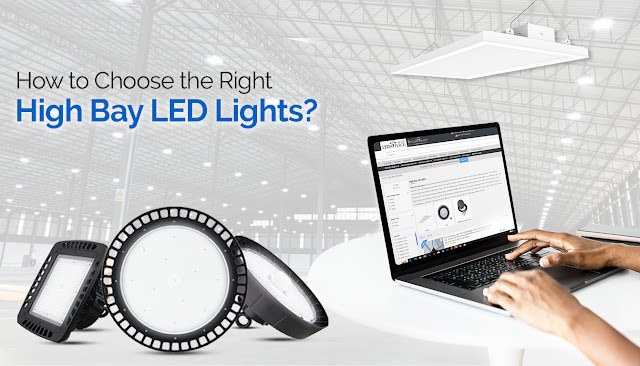When it comes to lighting industrial or commercial spaces, High Bay LED Lights are a popular choice due to their energy efficiency, long lifespan, and ability to produce high light levels. However, with so many options on the market, it can be difficult to choose the right LED high bay light for your needs. Here are some factors to consider when making your selection.
Lumens
The first thing to consider when choosing an LED high bay light is the amount of light it produces or its lumen output. The higher the lumens, the brighter the light. To determine the appropriate lumen output for your space, you'll need to consider the space's size and the ceiling's height. As a general rule, you'll want to aim for about 70-80 lumens per square foot for industrial spaces and 50-70 lumens per square foot for commercial spaces.
Wattage
In addition to lumens, you'll also want to consider the wattage of the Ufo LED High Bay Lights. Wattage measures the amount of power consumed by the light, and lamps with a higher wattage typically produce more light. However, they will also be more expensive to operate. To determine the appropriate wattage for your space, you'll need to consider both the lumen output and the size of the space.
Color Temperature
CRI
CRI, or Color Rendering Index, is a measure of how accurately a lamp renders colors. A lamp with a high CRI will produce more accurate and vibrant colors, while a lamp with a low CRI may make colors appear washed out or distorted. For most applications, a CRI of 80 or higher is considered acceptable. Still, for applications where color accuracy is critical (e.g., art galleries, museums, etc.), a CRI of 90 or higher is recommended.
Beam Angle
Mounting Height
The height at which the LED high bay light is mounted will also affect the type of lamp you choose. Higher mounting heights will require a lamp with a wider beam angle and a higher lumen output to ensure that the light is distributed evenly across the space. On the other hand, a lower mounting height may require a lamp with a narrower beam angle to avoid glare or overlighting.
Environment
Finally, you'll want to consider the environment in which the LED high bay light will be used. For example, if the lamp will be used in a damp or wet location, you'll need to choose a lamp rated for use in those conditions (e.g., an IP65 or higher rating). Similarly, if the lamp will be used in a location with extreme temperatures, you'll need to choose a lamp that can withstand those temperatures (e.g., a lamp with a -40°F to 122°F operating temperature range).
In addition to these factors, you'll also want to consider the overall cost of the LED high bay light, including both the initial purchase price and the cost of operating the lamp over its lifetime. Energy-efficient lamps may have a higher upfront cost, but they can save you money in the long run by reducing your energy consumption.
To sum it up, choosing the right LED high bay light requires considering a range of factors, including lumen output, wattage, color temperature, CRI, beam angle, mounting height, and the environment in which the lamp will be used. By taking the time to evaluate these factors carefully, you can ensure that you choose a lamp that meets the needs of your space and provides the optimal lighting solution.



Comments
Post a Comment